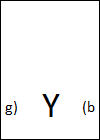Norsaga Game Design, Part 4
Kevin Bishop
 This is the fourth in a series of articles tracing the design of Norsaga’s core gameplay loop and mechanical balance. To see where it ends up, check out the rules document on the main site.
This is the fourth in a series of articles tracing the design of Norsaga’s core gameplay loop and mechanical balance. To see where it ends up, check out the rules document on the main site.
Last time, we talked about the design and evolution of Norsaga’s red and blue embellishments. Today, we’ll look at the green and yellow embellishments.
Craft embellishments (green)
Plunder (1st gen)
Initial version:
You may discard 3 cards to draw 2 cards.
One of the earliest ideas for a card-filtering power was "ditch your bad hand for a smaller, better one" (originally, the hand size was 3). It started in green but was eventually co-opted by yellow, leading to this replacement:
Take a random card from each player. At the end of your turn, discard your hand.
This homed in on green's "thief" role, but with problems. The first half of the power floods your hand with options, leading to time-consuming decision making. This also left a dilemma; having too many cards in hand actually hurts because you don't draw on your next turn; hence, the second half of the power.
However, this felt clunky. You had to risk a hand of (potentially good) cards on the slim chance that someone else randomly gave you a better card. Note, too, that players gave you random cards because otherwise you'd have to evaluate 1-3 additional hands during your power phase, which would really slow the game down.
Despite its flaws, improving this power took a while. It had a nice symmetry with green's 3rd gen power at the time, which also involved taking a random card from each player.
In the end, plunder was boiled down to its simplest idea: stealing a good card from someone's hand. Allowing you to choose the card (or no card at all) made it more reliable and powerful. Targeting only one player made the decision-making process snappier. Finally, adding the "give back a card" may sound like a downside, but in reality it lets you offload a worthless card while making sure that your opponent doesn't just draw an extra (possibly better) card next turn.
Thus, we end up at the final version:
Look at another player's hand. You may swap a card from your hand with one from theirs.
Turncoat (2nd gen)
Initial version:
Look at the top of the hero deck and play or discard it.
This was another early power idea, although it took a while to find its proper home (hint: yellow).
Fun fact: there was actually an even earlier version which never saw playtesting. It temporarily played the top card of the deck on top of a hero, but didn't discard the hero underneath; they came back when the "illusion" on top of them went away. This initial power felt much more blue/green, but was too complicated to survive the initial concepting phase.
Fast forward one playtest and the "play a random card" power moved to yellow for thematic reasons. Now green got this:
You may discard 1 hero card with a green dominant or recessive trait. If you do, you may play 1 extra card this turn.
This, too, didn't stay green long before moving to blue. Green was updated again, with:
Take back a hero from your family tree. If you do, play a card.
Now we were on the right track. The uses aren't in-your-face obvious, but this presents a way to move your early cards into more advantageous positions late game. It also fits with the concept that 2nd gen powers let you play a free card each turn.
Only one problem: this power doesn't actually gain you board position by increasing the total number of cards on your family tree. We struggled with this deficiency for a while. The power is fun as-is, but definitely weaker in a race.
In the end, our solution was to tack on power in a different vein. Instead of helping you advance your board position, the power now helps you advance your hand position by dumping any cards you don't want. In fact, this cemented green's second identity as the color best capable of controlling the cards in its own hand.
Final version:
Take back a hero from your family tree. If you do, play a card, then discard any number of cards.
And yes, this creates an infinite loop with a skald. However, taking back and playing the same skald repeatedly has no meaningful side effects other than convincing your friends to find someone more fun to play with.
Infiltrate (3rd gen)
Initial version:
Pick 1 ancient hero on your family tree and one on another player’s family tree. Swap those heroes.
Not much to say about this version; it quickly moved to blue, as it's more trading than stealing. Green got:
Take a random card from each player. Play one of them as an ancient hero and discard the rest.
This power was a bear to develop because there are so many ways to try and tune it.
- Should it steal random cards, or let you choose?
- Should it hit one player or all?
- Should it include yourself? (Hint: as worded, it does.)
- How many should it let you play?
- Should it restrict where you play them?
- If it only plays 1 card, is it any better than the typical 2nd gen powers which net you a card?
Here's a sample of what we decided, as the power changed to:
Take a random card from each player, including yourself. Play up to 2 of them as a grand hero and discard the rest.
We held onto this version for a while, because it mirrored green's 1st gen power at the time. When plunder was improved to its modern version, we lost our last reason to hold onto this somewhat ugly power, and looked at other ways to make an epic experience that involved hand manipulation.
This is what we settled on:
Look at any player's hand. You may place each of their cards onto any existing hero of the same color.
On the surface, it seems underwhelming. It lets you play more cards than almost any other power, but you can't change dominant colors? You can't ghost meaningful heroes? You can't break up someone's 3rd gen embellishment?
The secret here is that later in the game, recessive traits are the most important for actually winning. This power lets you simultaneously strengthen your own or break up your opponents. It also lets you dump your own hand every turn for a better one, which is a huge help if you only need to draw that one perfect card and win the game.
Faith embellishments (yellow)
Chant (1st gen)
Initial version:
You may take 1 of the top 3 cards from the discard pile and put it in your hand. If you do, discard your other cards.
This tapped into the flavor of necromancy, divination, and resurrection: good candidates for a color whose main hero was called the Cleric for many months.
Unfortunately, this creates a second game for everyone else: watching what you discard. It felt bad to pitch a useless card, only to realize that the yellow player to your left could just it up and win. In a similar vein, if everyone discarded only useless cards, the yellow player got no real advantage out of their level 1 power. It wasn't fun.
We stuck with it for a while anyways, just to hold onto the flavor. It became:
You may take 1 of the top 3 cards from the discard pile and put it in your hand. If you do, discard your other cards.
...before we gave up and stole green's 1st gen power:
Discard your hand and draw 2 cards.
At the time, hand size was 3, so this is functionally equivalent to the final version:
Discard your hand and draw 3 cards.
We came to realize that this had a great role in yellow's gameplay and flavor. As a power it says, "I have faith that I'll draw a better hand." As a strategic building block for yellow, it adds utility for hand management, before the color switches gears and becomes a card-playing monster at 2nd gen. Speaking of which...
Prayer (2nd gen)
It started out innocently enough. Here's the initial version:
You may take a hero from your family tree and put it back into your hand. If you do, you may play an extra card this turn.
As we saw earlier, this became green's 2nd gen power, Turncoat. Yellow got this, though:
Play the top card of the hero deck.
And that's the final version, showing how short the development was of what is arguably the most efficient embellishment in the entire game.
If you're asking why, play a 4 player game and watch what happens. The first few rounds are a toss-up, but usually someone ends up as 2nd gen yellow. And then they use prayer. Every turn. Soon they're praying into skalds, or just playing them afterwards from their hand. Skalds beget more prayers. The synergy is raw and perfect and nearly unstoppable.
While other colors are working to get good cards into their hands, 2nd gen yellow just gets cards onto your board. The cards themselves rarely matter; once you have enough, you start finding ways to assign your stones and suddenly you're one move away from winning.
In Norsaga, that's the power of Prayer!
Even though its development was short, there's actually more to this story. Throughout our internal playtesting, we noticed how powerful Prayer was. We noticed even more when we took the game to Gen Con and showed it to a bunch of strangers. Prayer is consistently the easiest power to win with because it requires so little skill.
And in the end, that's why we didn't tune it down. It's a great embellishment for beginners to use and actually feel powerful with. Advanced players start learning to ghost anyone who goes 2nd gen yellow, making the power inherently more risky. Meanwhile, surgical powers like 2nd gen blue or even 1st gen ghost allow skilled players to pull off much more gratifying wins.
It helps that 1st gen yellow is somewhat difficult to use well. Ghosting someone from 2nd gen yellow down to 1st gen often sets them back quite a ways.
Martyr (3rd gen)
Initial version:
Dismiss an ancient hero whose dominant trait is different from its youngest descendant’s.
This started as a "nuke" power with a hint of banish-the-nonbelievers. Because incinerating a player's board every turn can make the game no fun at all for them, the power became wicked in a different way:
You may play an ancient hero on another player’s family tree.
It still nukes powerful heroes, but at least it gives something back. Unfortunately, this power ended up feeling more suited to the hyper-aggressive red. Yellow had to look for something new, and got this:
Each player takes one of their ancient heroes back. Draw that many cards and play them where those heroes used to be.
This looks like the final version -- and it essentially is -- but we didn't know it at the time. The power is interesting but has some downsides in complexity. 4 players means you're drawing 4 cards and evaluating all 4 against each of the 4 places they could go. That's 16 different plays to evaluate. It can bog the game down, because being hasty and playing without thinking often gives someone else a win you didn't even see!
Unfortunately, we never had a solid enough replacement to write one down, so the crazy ideas we tried out are lost to history. It did take several months for us to appreciate just how entertaining the original power was, and we eventually decided that the complexity was worth the fun it was bringing to the game.
And that's all four embellishments! But aren't we forgetting something? Check back next time as we finish with the evolution of the ghost embellishments.





